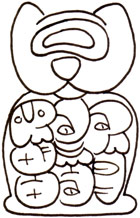unofficial words
Right at the beginning of the course in Syllables part 1 and part 2 we learned how to write out the syllable glyphs. Take a look at this lesson again is you need a refresher.
Now that we know more about block order, let’s review proper names with longer syllable strings:
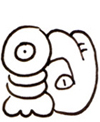
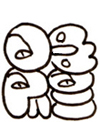
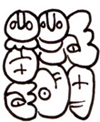
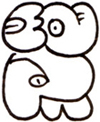
infixed in a cartouche:
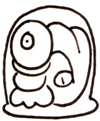
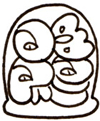
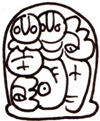

and complete with a head noun:
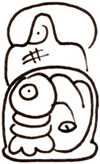
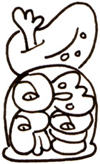
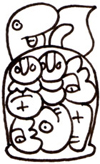
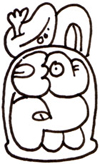
jan as a container
By far the most common head noun is jan, as everyone’s proper name is presented this way. Luckily we have one simplification available to us, as jan can combine with the cartouche and act as a container in itself:



organizing syllable glyphs
First let me say, as much as I might want to stick the head noun on top of the cartouche when given the chance, inside of a sentence it often makes more sense to move the pieces around to fit the situation.
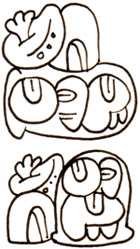
Often the head noun is better positioned to the side. And sometimes the cartouche becomes long and thin, in which case I rotate it clockwise a quarter turn so the foot is on the left. You could rotate the foot to the right too, I just tend towards the left because that’s how the Egyptians did it.
These two versions of ma tomo Uluku might look strange on their own, but later in this lesson we will see them arranged in both these ways inside of full sentences.
syllable breaks

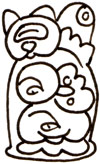
When reading linear text written with one character for each consonant and vowel, it is sometimes easy to forget toki pona is actually a syllabic language. Remember that only the first syllable can begin without a consonant, even though all syllables can end with n. So make sure if there is a syllable starting with an n that the n is used as a container for the vowel, and not attached to the bottom of another glyph. For example Toni is jan To-ni, not Ton-i, and the monkey god Haniman is soweli sewi A-ni-man, not An-i-man.
long words are best organized into columns
Breaking toki pona into syllables is much more linear in nature than working with containers and infixes. Since the syllable glyphs are pretty regular in form, when it comes time to organize them it is best to break them into regular columns. Also be aware that the n and the l containers are thinner than the others. Sometimes this can work to one’s advantage and sometimes it requires a little stretching or squishing.
See above how nicely the na and la glyphs fill in the last column of Intenasijonale? But the other na is a little thin in the fleft column, and this space needs to be taken up by the jo in the second column. I can’t give you a clear set of rules that will work in all situations, so let me show you by example how I might solve fitting an unofficial word into a cartouche.
soweli Kijetesantakalu
Lets look at jan Sonja’s April Fools day word kijetesantakalu as an extreme example of how to organize syllable glyphs. First we know we have seven syllable glyphs to work with.

Seven is a prime number so we know right away we won’t have a nice regular grid to work with. A single column or row is too long, so our next choice is two or three columns. Lets look at two columns first.
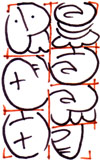
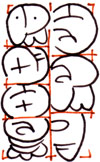
OK, they’re both passable, but you know what bothers me? Either way the san glyph is going to be squeezed into the column with the extra glyph, and with the n on the bottom it’s already a little taller than the others. Also the lu is on the bottom right side, and its too thin to fill in the space. Either way, the whole block looks like it would fall over to the right.
Let’s try three columns next. We have three choices now, because one of the three columns will have three glyps.
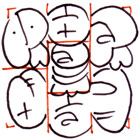
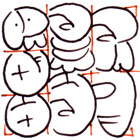
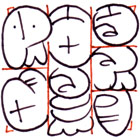
If three glyphs run down in the middle the taller san block is crowded again, so that means the column of three is best on the left or right. I like the version with three glyphs on the left best because that also gives li space to stretch up on the bottom right.
Next I’m going to start stretching the san in the middle out even more and push the ta below it into a rounder shape. If this really was an official word, we’d be done now, but I’m going to add a cartouche and head glyph.
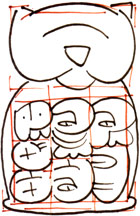
I’m drawing this out here in different color pens for demonstration purposes, but you can try doing your sketching with a light colored pencil first, or tracing from your sketches onto a new sheet for the final drawing. As I make the final drawing, I’m going to drop the head down slightly over the top of the cartouche, and fill in the details.
